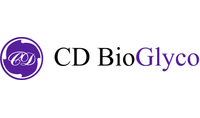
A Natural Polysaccharide-based Bioadhesive for Wound Repair Found
Hundreds of millions of people suffer skin tissue damage every year, including accidental injury, surgical injury, chronic ulcer, etc., and severe cases may lead to amputation or even life-threatening. Suturing is currently the preferred method for clinically closing wounds. However, wound suturing takes a long time during the operation, and removing the stitches will cause secondary damage to the tissue, and easily lead to risks such as scar hyperplasia, contracture, and infection. The invention of tissue adhesives brought great technological advances in surgery.
At present, the tissue adhesives widely used clinically are mainly chemically synthesized cyanoacrylates and fibrin glues. Cyanoacrylate adhesives have strong adhesion properties, but they have disadvantages such as slow degradation and toxic side effects. Fibrin adhesive has good biocompatibility, but due to its weak adhesion, it is applied to some tissue areas with small local stress, so its application range is limited. Therefore, there is an urgent clinical need for tissue adhesives with good biocompatibility, high adhesion and low potential risk.
Wu Mingyi's team, National Key Experimental Research and Development of Natural Glycan Drugs, Phytochemistry and Sustainable Utilization of Western Plant Resources, Kunming Institute of Botany, Chinese Academy of Sciences, focused on the key scientific issues of the structure and function of natural polysaccharides, and systematically carried out basic research related to the discovery of new drugs such as the purification and preparation of natural polysaccharides, structural analysis, pharmacological activity, and druggability evaluation, with a view to lay the foundation for the research and development of innovative sugar drugs from natural sources.
Recently, the special group discovered a natural polysaccharide-based adhesive (dried Snail Mucus Gel, d-SMG) from white jade snail mucus, and found that it has strong adhesion to wet tissues, which is better than the fibrin glue used in clinical practice. In order to elucidate the internal mechanism of d-SMG gelation and adhesion, further systematic identification and analysis of its components were carried out, and it was found that d-SMG is mainly composed of heparan-like snail glycosaminoglycans and snail proteins and other biomacromolecules , in which the new glycosaminoglycan is its main active component; the unique double-network gel system composed of polysaccharide and protein makes snail mucus have outstanding hydrogel properties and strong tissue adhesion.
Further animal experiments showed that the natural adhesive d-SMG promoted the healing of acute skin injuries and diabetic chronic wounds, and the effect was better than alginate dressings widely used in clinical practice. Analysis of tissue staining and immunohistochemistry showed that the natural hydrogel significantly accelerated the granulation tissue regeneration, angiogenesis and collagen deposition in chronic wounds, and significantly down-regulate the expression levels of TNF-α, IFN-γ, IL-6 and other inflammatory cytokines in tissues. In-depth mechanistic studies reveal that the hydrogel promotes the polarization of macrophages to the anti-inflammatory M2 phenotype and relieve the inflammatory response in chronic wounds, and promote the transition of chronic wounds to the proliferative phase, thereby accelerating wound healing.
The results of this study have certain enlightening significance for the development of a new generation of biomedical adhesives, and also provide a new idea for the treatment of common skin wounds and clinically refractory diabetic foot ulcers and other skin diseases.
Customer comments
No comments were found for A Natural Polysaccharide-based Bioadhesive for Wound Repair Found. Be the first to comment!
